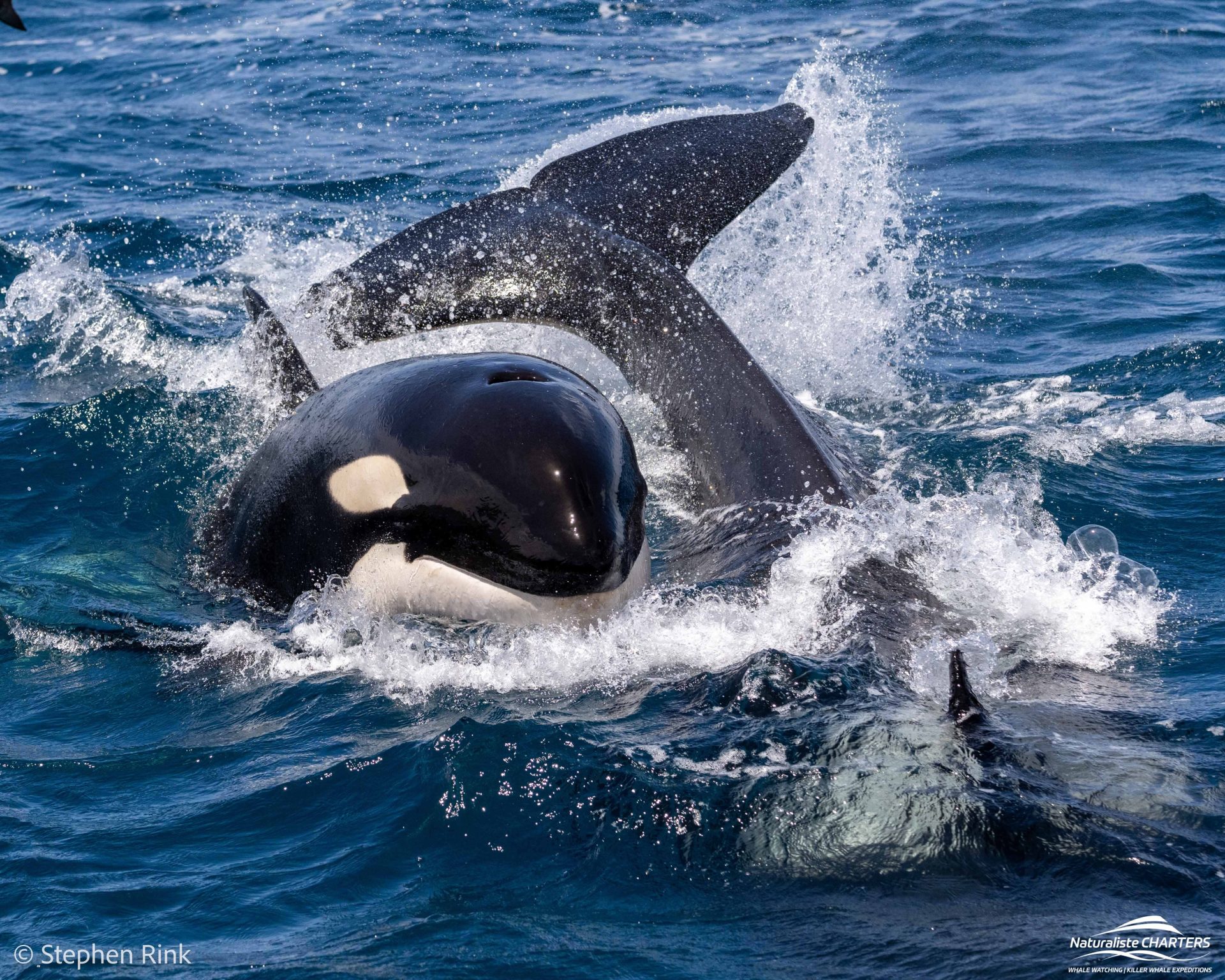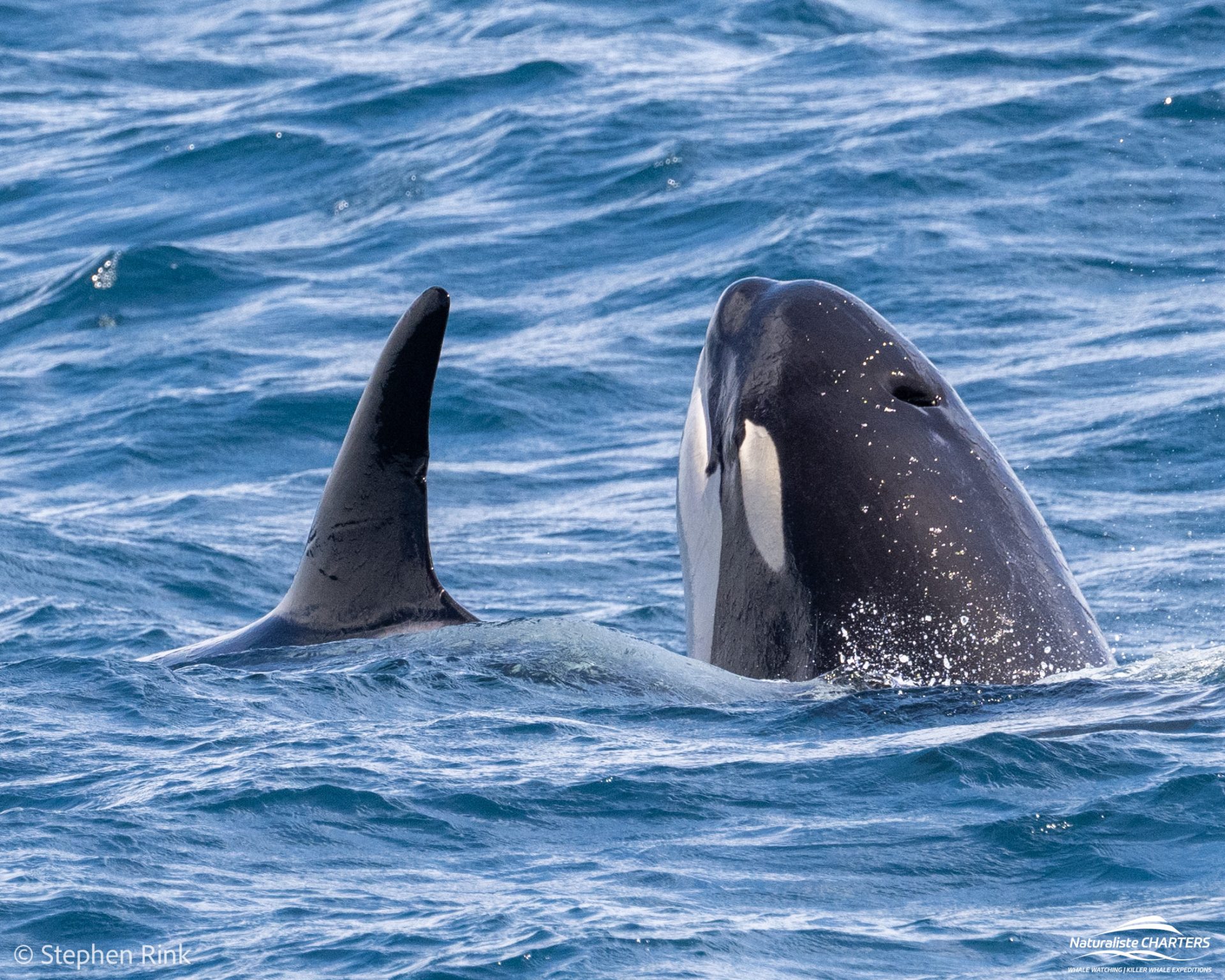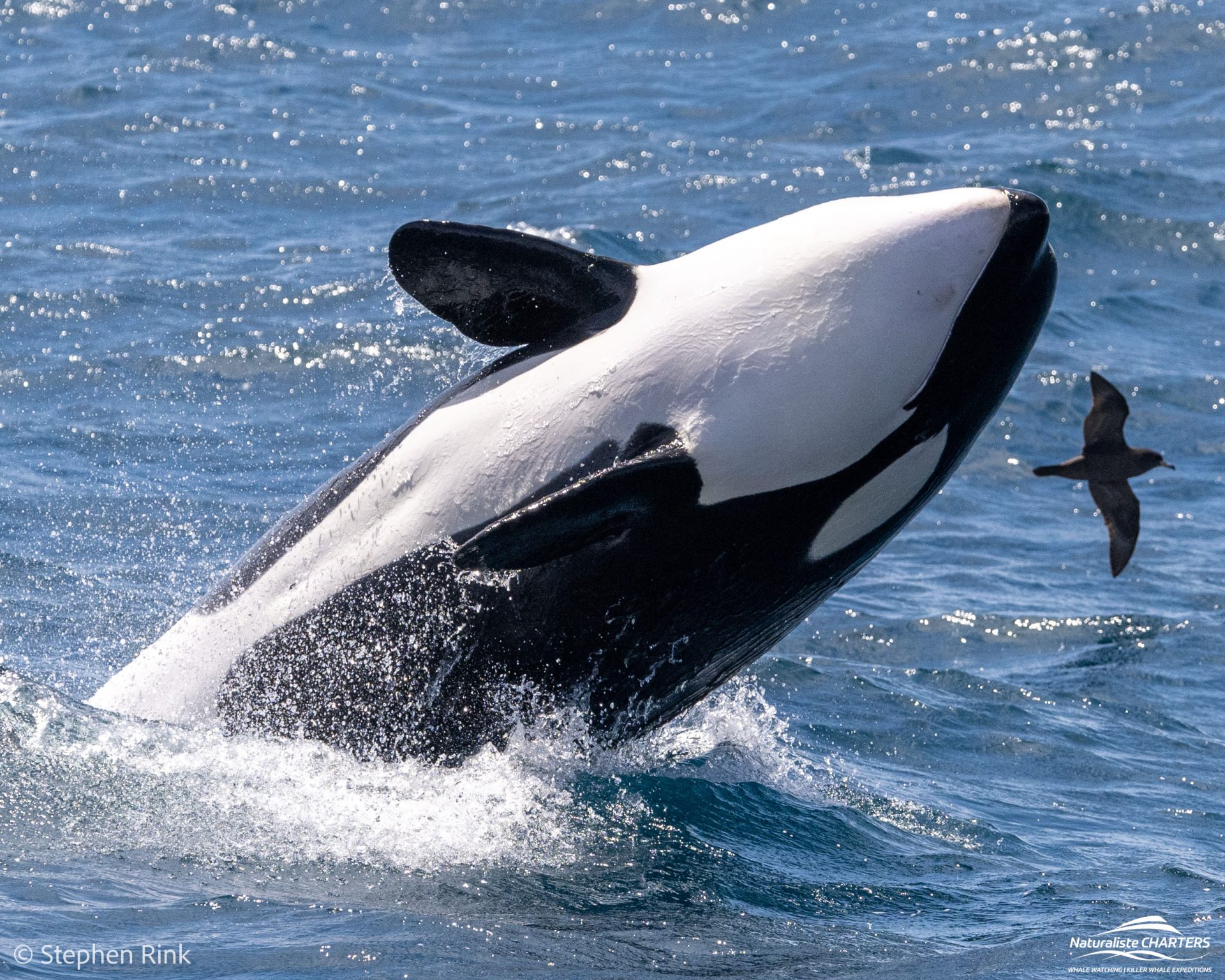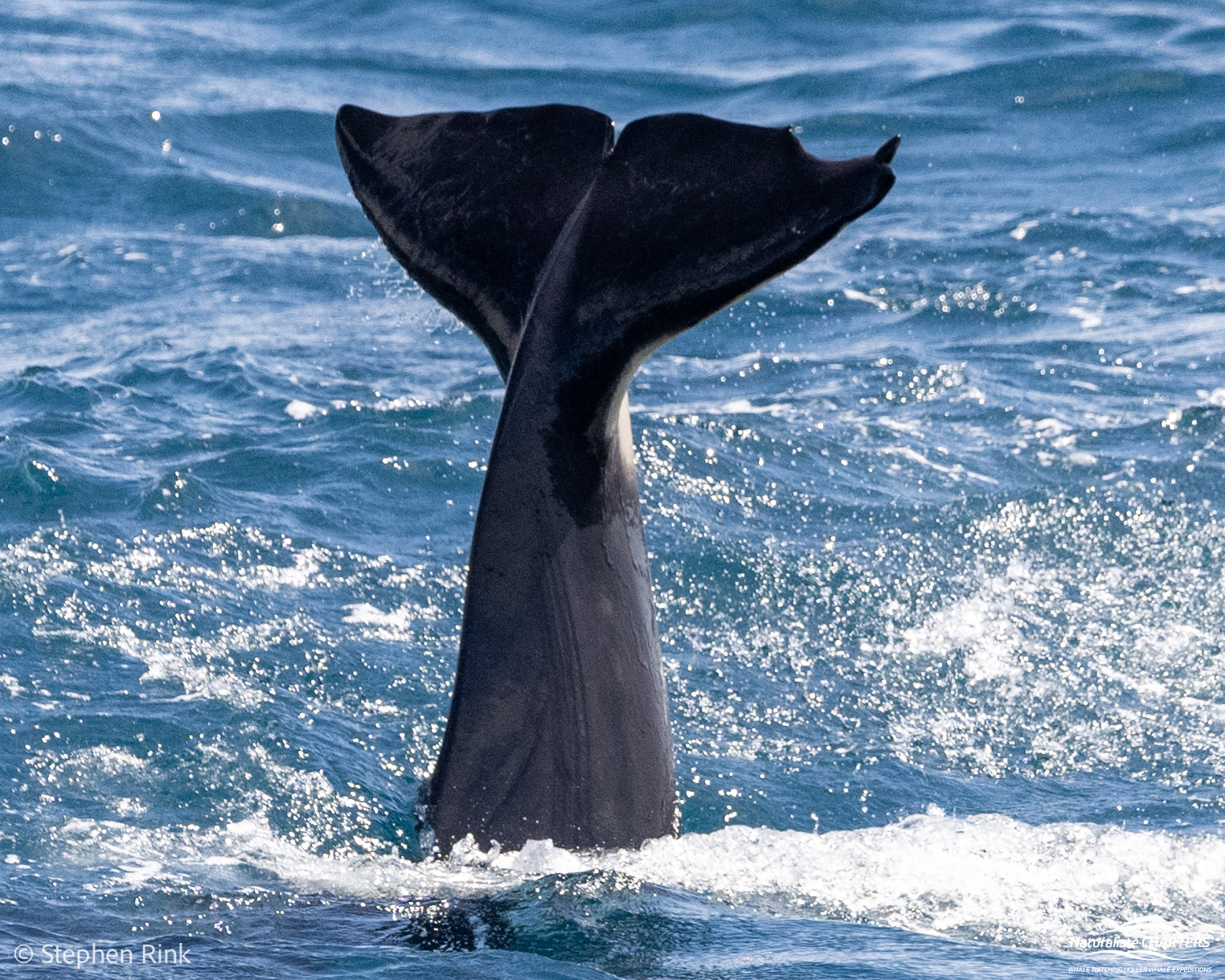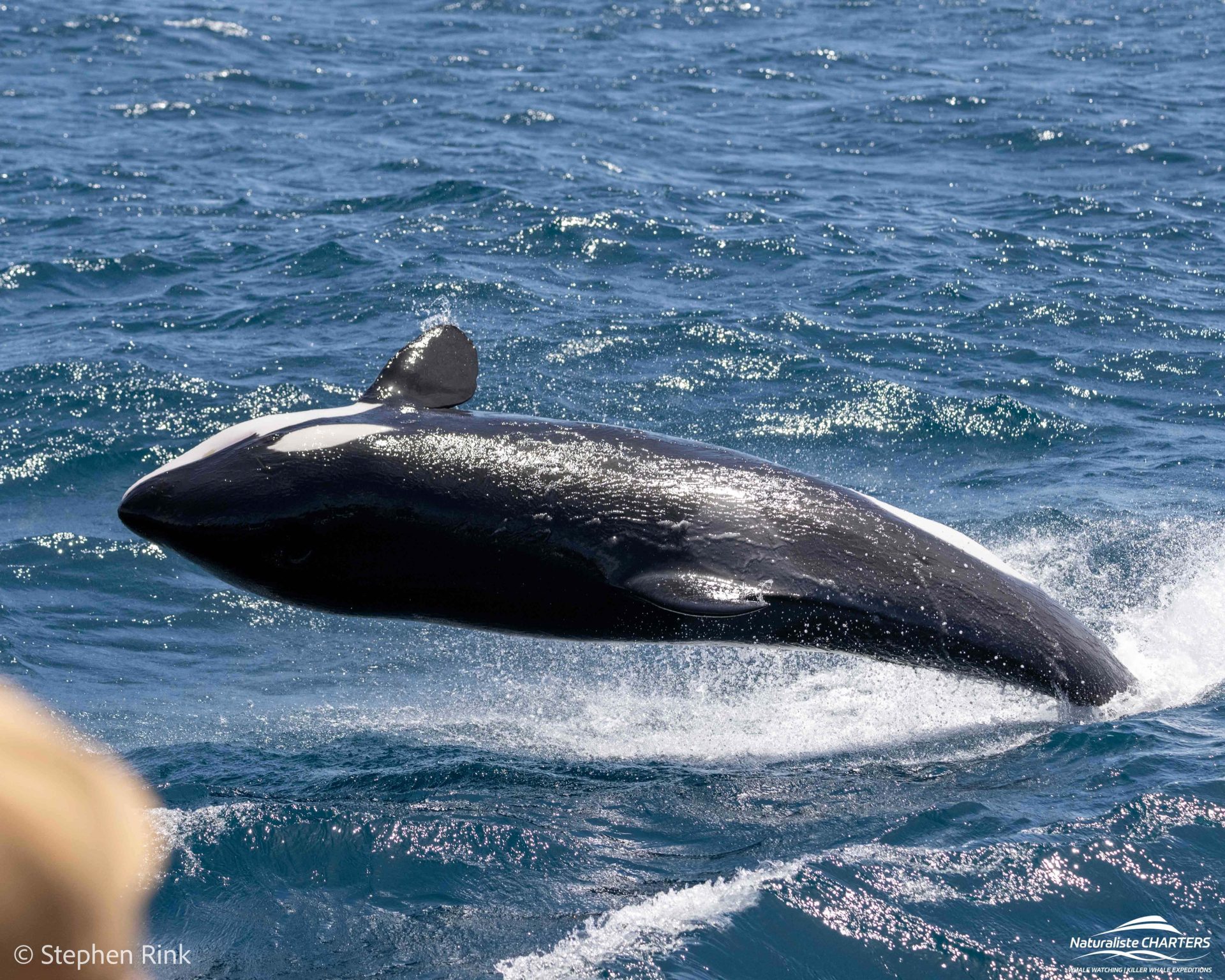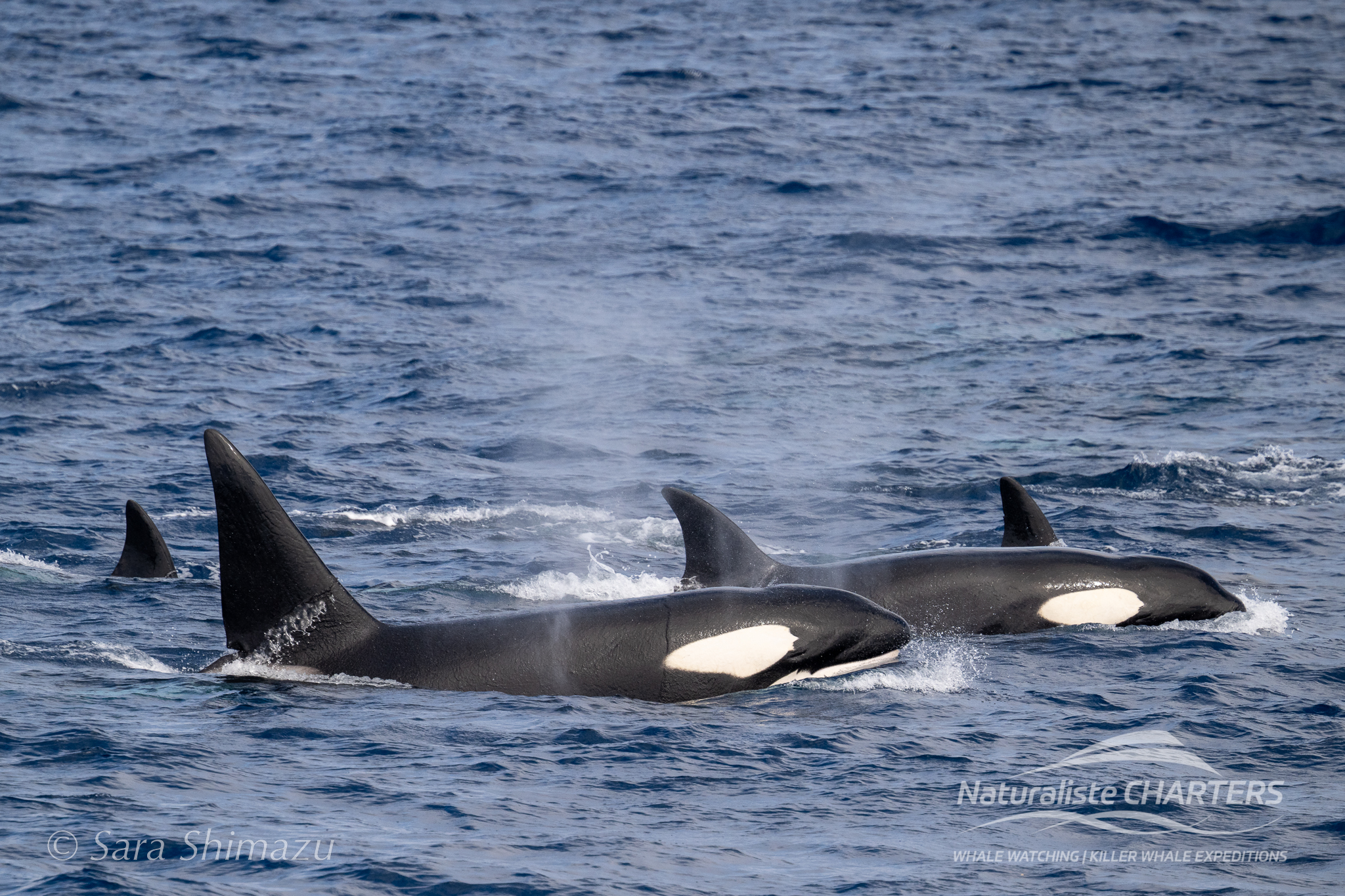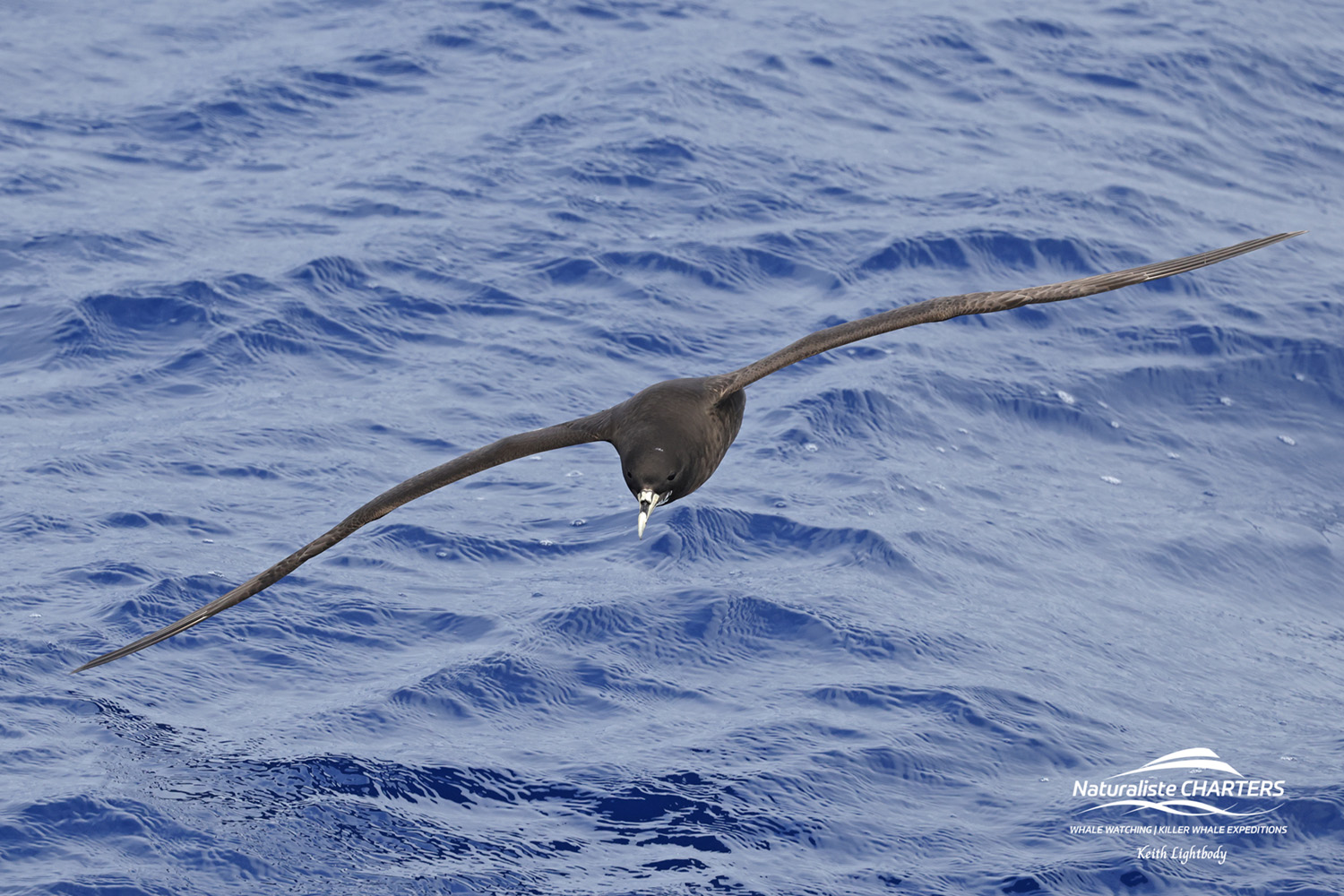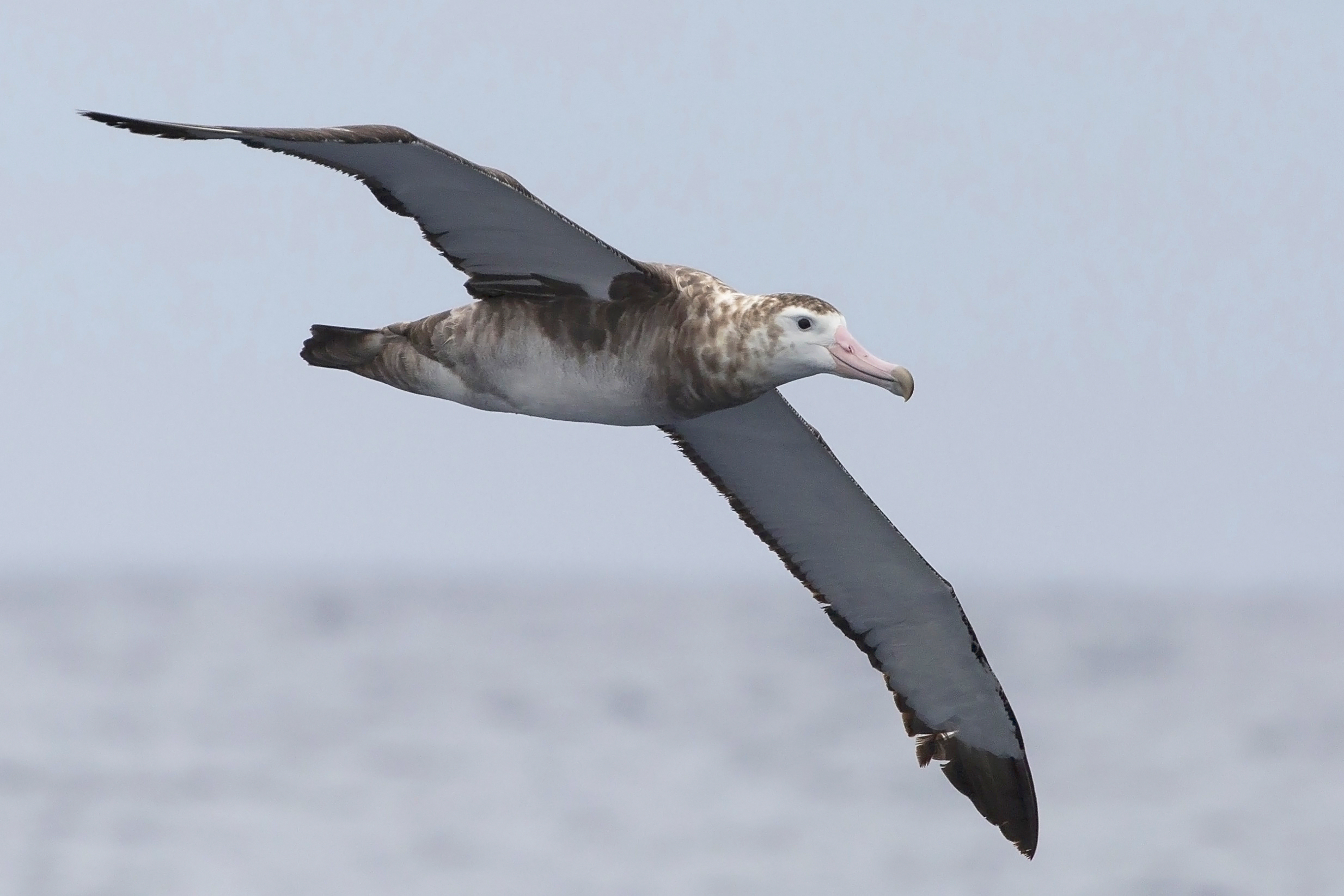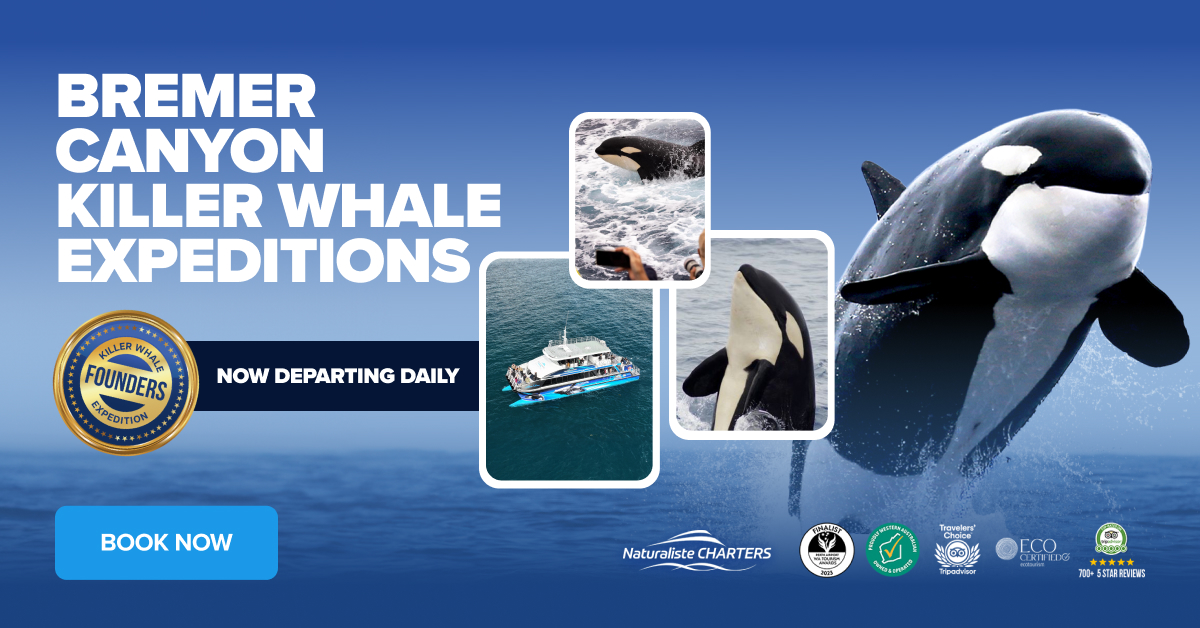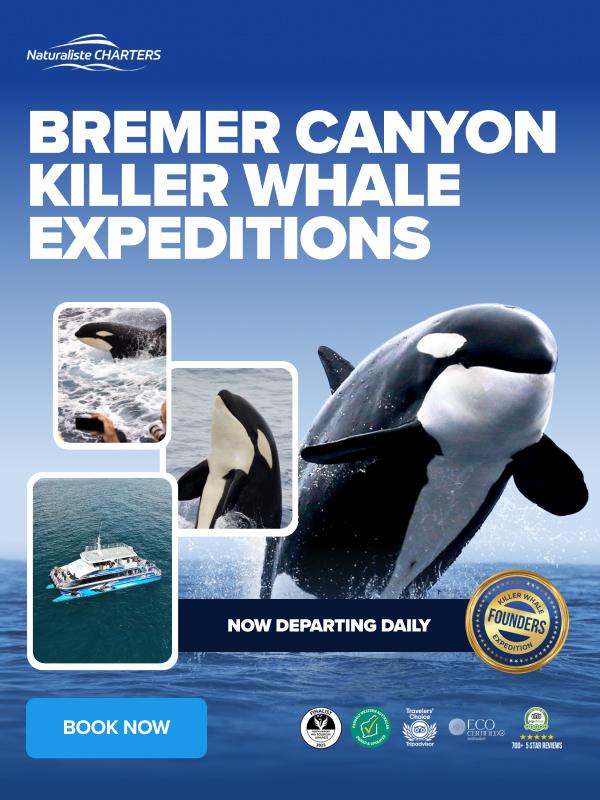Tracking Orca Pods in Their Natural Habitat
Witnessing orcas in their natural habitat is an awe-inspiring experience. This morning’s journey from Bremer Bay into the Southern Ocean was filled with anticipation as we ventured toward the hotspot, eager to encounter these apex predators.
Upon arrival, the first clue of orca activity was an eerie oil slick glistening on the surface—an unmistakable sign of a recent kill. Despite this evidence, the pod remained elusive. Nevertheless, determined to track them, we pushed westward, scanning the horizon for their iconic dorsal fins.
Read More About: The Life of an Orca
Lunchtime with Split Tip’s Pod
Our persistence paid off. After returning to the hotspot, Split Tip’s pod appeared, gliding through a vast oil slick. The air carried the distinct scent of mammal oil—further proof that feeding had taken place earlier.
Observing the pod in their natural habitat was mesmerising. Full-bellied juveniles moved contentedly beside adults, while chunks of prey were still being shared among them. This intimate view of orca life revealed just how cooperative and efficient these animals are during mealtime.
Orca Feeding in Their Natural Habit
In their natural habitat, orcas rely on teamwork to consume their prey. Their interlocking teeth prevent chewing, so they adopt a coordinated feeding strategy. One individual holds the prey while others tear off manageable chunks. This collaborative method not only ensures successful feeding but also strengthens pod bonds.
Watching these behaviours unfold reminds us of the intricate intelligence and social structures orcas possess—an excellent example of survival adapted perfectly to their environment.
Playful Behaviour Beneath the Sun
Just when we thought the day could not get better, the pod shifted into play mode. What first looked like a chase soon turned into an energetic display. With bellies flashing white and tails slapping the water, the orcas danced around the vessel, showing off their agility and curiosity.
At one point, they came so close to the boat it felt as though they were inspecting us, just as we had observed them. These moments—face to face with wild orcas—are what make visiting their natural habitat so unforgettable.
Marine Birds Join the Feeding Frenzy
Later in the day, we returned to the slick and discovered a flurry of activity overhead. Flesh-footed shearwaters had gathered, diving expertly into the water in search of leftovers. Their presence highlighted the richness of this marine environment, where every species plays a role in the broader ecosystem.
The feeding behaviours of seabirds and orcas differ, but together they reveal the incredible biodiversity thriving in these southern waters.
A Graceful Goodbye
As the tour drew to a close, the orcas offered us one final encounter. Slowly and purposefully, they approached the boat once more. Young Basil delighted everyone onboard with a spirited spy hop—a playful farewell gesture.
Moments like this offer a deep connection between humans and marine life. Seeing orcas behave naturally, undisturbed in their wild world, is a powerful reminder of why protecting their natural habitat is so important.
Learn more about our Bremer Bay departure location
See more photos from this tour on our Facebook page – search 15.02.2024

